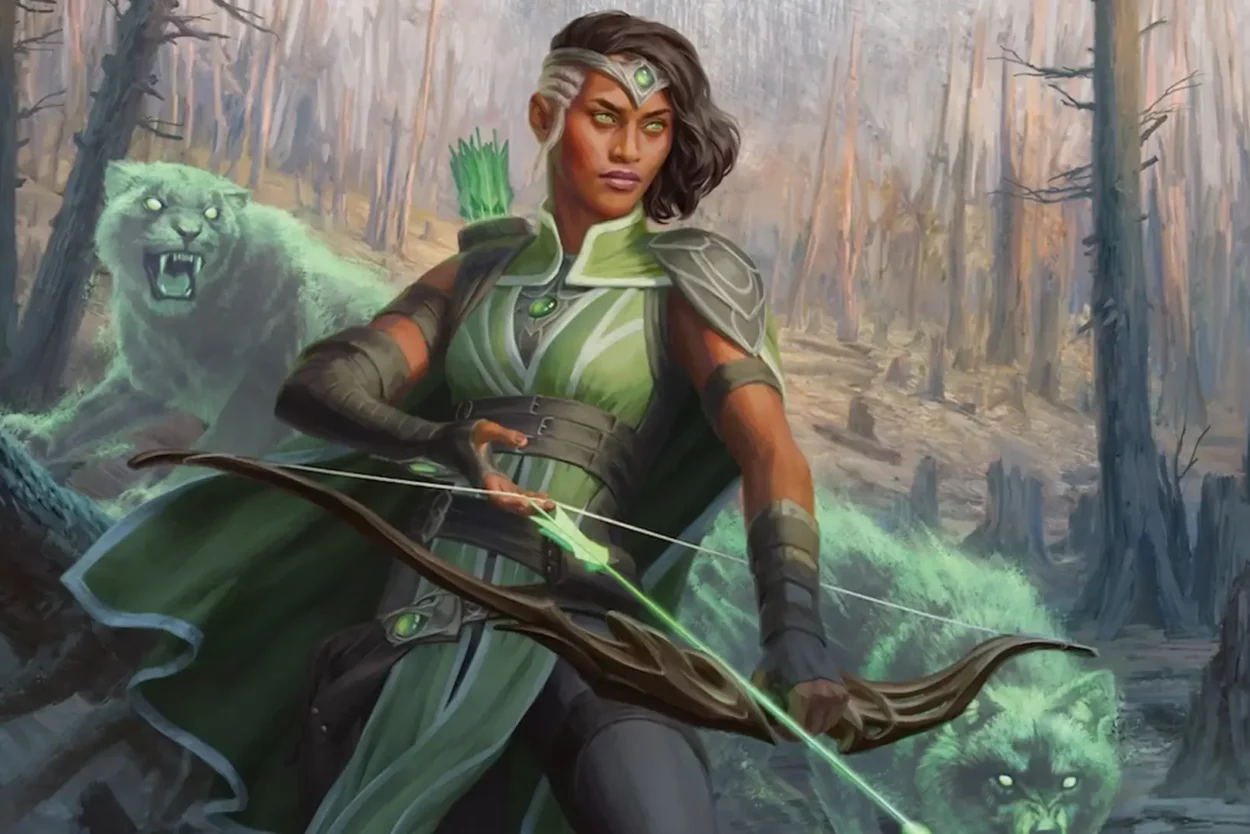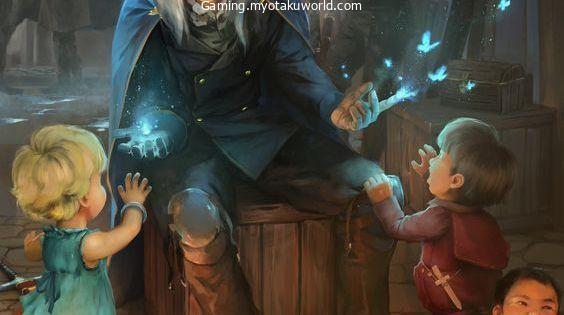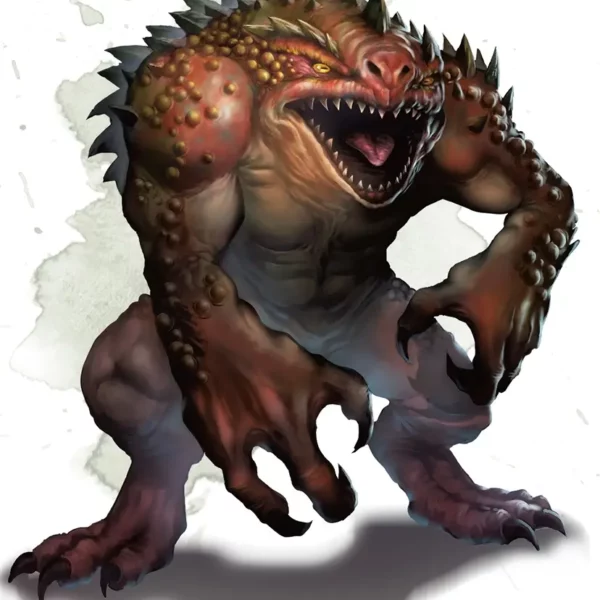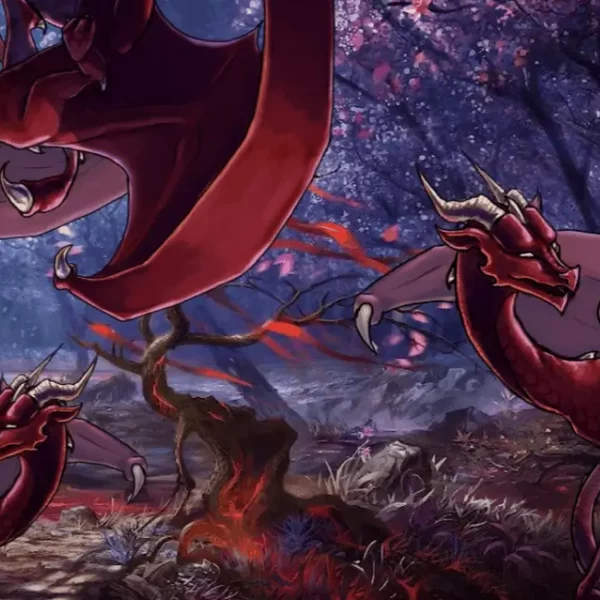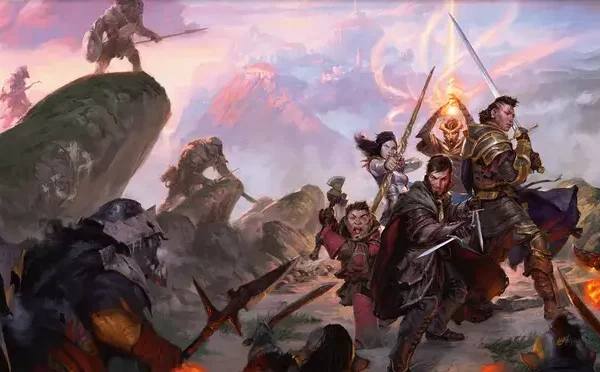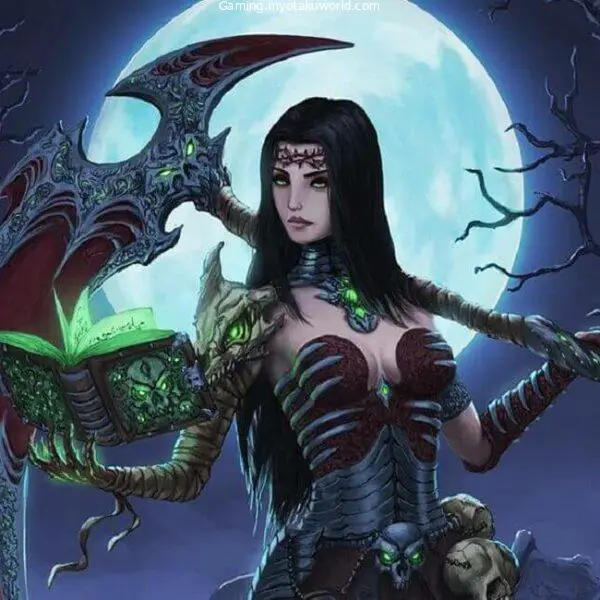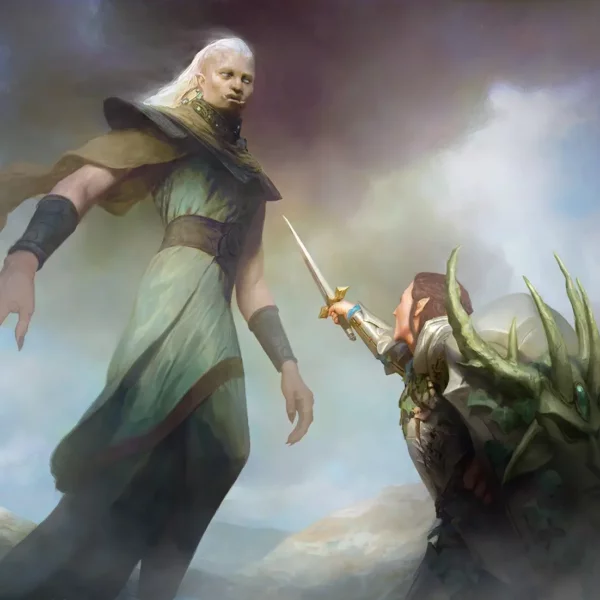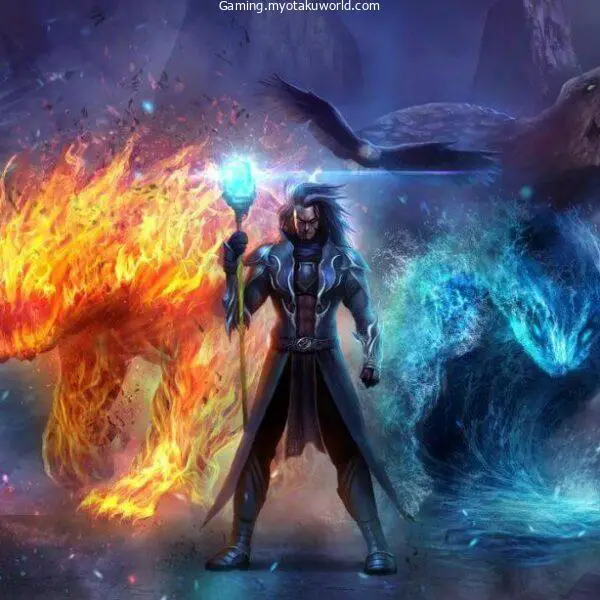The rangers is a core character class in D & D 5e. In the end, being a ranger boils down to defending civilization against the hideous creatures that prowl the wild.
The class is a hybrid of the fighter and the druid, giving warriors who excel at tracking, navigating the wilderness, and hunting their prey a new class option.
When the 5th edition of Dungeons & Dragons was introduced, rangers were widely regarded as underpowered.
But they have undergone a major overhaul over the course of 5e’s existence. Tasha’s Cauldron of Everything published alternative class features and an official improved version of the Beastmaster subclass, which made the class more playable with each successive subclass release.
Dexterity is a key attribute for ranger weapon attacks, whereas Wisdom is a key attribute for spellcasting.
There are a few examples of strength-based rangers, but they aren’t popular. A ranger does not have to use a ranged weapon, even though the name implies otherwise.
It is possible to wield a two-handed weapon as a ranger because you are skilled with all weapons.
Dexterity-based builds are better suited for rangers because they have access to a variety of fighting methods.
In comparison to other classes like fighters and paladins, rangers have d10 hit dice. Armor and weapons of all kinds, including heavy and medium, are at your disposal.
Dexterity-focused rangers may find that studded leather armor gives them a better AC than most medium-weight options, so they stick with the lighter, less expensive option.
In addition, you learn three new abilities from a list of Wisdom-related abilities.
Initially, you wear scale mail or leather armor, depending on your preference. Assuming your Dexterity is 17, you’ll begin with scale mail armor with an AC of 16 and leather armor with an AC of 14.
Scale mail, on the other hand, puts you at a disadvantage when it comes to stealth checks. You begin with a longbow, a dungeoneer’s or explorer’s bag, two shortswords, a pair of rudimentary melee weapons, and a quiver of 20 arrows.
- Favored Enemy (1st Level)
- Natural Explorer (1st Level)
- Fighting Style (2nd Level)
- Spellcasting (2nd Level)
- Primeval Awareness (3rd Level)
- Extra Attack (5th Level)
- Land’s Stride (8th Level)
- Hide in Plain Sight (10th Level)
- Vanish (14th Level)
- Feral Senses (18th Level)
- Foe Slayer (20th Level)
- Optional Abilities (TCoE)
- Deft Explorer (1st/6th/10th Level)
- Favored Foe (1st Level)
- Additional Ranger Spells (2nd Level)
- Fighting Style Options (2nd Level)
- Spellcasting Focus
- Primal Awareness (3rd Level)
- Martial Versatility
- Nature’s Veil (10th Level)
- Subclasses
- Hunter
- Beast Master (PHB/TCoE)
- Gloomstalker (XGtE)
- Horizon Walker (XGtE)
- Monster Slayer (XGtE)
- Fey Wanderer (TCoE)
- Swarmkeeper (TCoE)
- Race Options
- FAQs
- Summary
Favored Enemy (1st Level)
The type of enemy you face as an experienced hunter has become second nature to you. You have a preference for one or two different kinds of humanoids to be your main source of conflict.
Wisdom (Survival) and Intelligence (Recall) checks give you an advantage in tracking and remembering this type of enemy.
The problem with this skill is that many rangers have it for years before it is actually of any use to them.
Choosing a monster type that doesn’t appear in the campaign could render this pointless. Even if you do come across one of these creatures, it must be in the context of a hunt.
Choose a creature type that is more common or one that you know your DM enjoys using. Oozes and constructs are a waste of time, so stick to the undead and your pals.
Only if you’re going to be exploring dungeons and dealing with creatures will humanoids be useful (choose a human as an example).
Extra aid can be obtained by asking the DM what type of adventure you’ll be taking part in.
Natural Explorer (1st Level)
To complete your favorite enemy, you need a favorite landscape. It’s a situational ability, but at least you and your companions won’t get lost or starve to death while exploring the area you choose.
The terrain-related Wisdom and Intelligence checks that you make become more proficient as a result.
As before, if your DM is willing to share, inquire as to the type of terrain you might expect to come across.
In a place where becoming lost could mean the difference between life and death, this is a useful tool.
Fighting Style (2nd Level)
With practice, you improve your ranger’s fighting skills. It is all up to the individual to focus on ranged weapons, improve their AC, or use one or two melee weapons.
Spellcasting (2nd Level)
From the second level, rangers begin to learn how to cast spells and obtain spell slots up to the fifth level.
As a result, they are semi-casters, similar to paladins. When you’re a ranger, you get access to druid spells that can be cast with Wisdom.
“Spells known” are spells you learn to cast, much like a bard or a sorcerer. Unlike a cleric or druid, who can alter their spell list daily, your choice of spells is far more critical.
Primeval Awareness (3rd Level)
You can use a spell slot to learn if there are any aberrations, celestials, dragons, elementals, fey, fiends, or undead within a one-mile radius of you.
Neither the number of creatures present nor the types of creatures found nor their locations are divulged. Everyone moves on when the DM tells you “yes” or “no.” This is a poor ability.
Extra Attack (5th Level)
For the majority of martial arts, the 5th level is when you’re expected to attack twice. For the ranger, Hunter’s Mark and other continuous abilities like this work well together.
Land’s Stride (8th Level)
All nonmagical tough terrain is ignored at this level, and saving throws against magical terrain comprised of plants have an advantage.
If you’re a melee ranger, the ability to ignore challenging terrain is a huge advantage. If you’re using long-range weapons, you won’t have to move as far to assault individuals.
Hide in Plain Sight (10th Level)
It is possible to blend in with nature. This is not meant to be used in combat, as it takes one minute to complete. Setting a trap or keeping watch in the bush, on the other hand, is an excellent use for it.
Vanish (14th Level)
A bonus action that allows ranged rangers to evade detection is ideal for snipers. If you don’t want to be monitored, you can also opt-out of it.
It’s reassuring to know that no one is tracking your movements. It’s not clear if this applies to your entire group of adventurers.
In order to keep up with your buddies, you may have to clean up after them.
Feral Senses (18th Level)
An invisible enemy can only be attacked by guessing its location on the combat map, which is a time-consuming and error-prone process.
Because of the disadvantages, you roll. This ability removes the disadvantage of not knowing the location of an unseen creature within 30 feet of you.
Don’t forget to inform your allies of your whereabouts.
Foe Slayer (20th Level)
Finally, you can apply your Wisdom modifier to an attack or damage roll against a target of your choice.
Even though you’ll have a slew of favorite foes by this time, your strategy is still flexible. But it is almost guaranteed that you’ll hit when you take the first swing.
Optional Abilities (TCoE)
Every class at Tasha’s Cauldron of Everything has optional options available. You’ll have to check with your DM if you want to use these features, as they are optional.
Many of the ranger’s primary skills, which many D&D players criticized, have been replaced by newer, more powerful options.
Deft Explorer (1st/6th/10th Level)
The Natural Explorer feature has been retired in favor of this one. At the start of the game, you gain two new languages and a new skill.
Climbing and swimming speed are both increased by 5 feet at the 6th level. When you reach the 10th level, you have the ability to temporarily boost your hit points and recover from tiredness.
Favored Foe (1st Level)
The preferred enemy function has been replaced by this ability. It’s true that they have a similar tone, which might be perplexing.
The only drawback is that a creature you encounter can be designated by you as your favored opponent for the next minute, allowing you to inflict more damage on it.
This trait replicates the spell Hunter’s Mark, which most rangers cast for an additional damage bonus.
You can now save your spell slots for other skills by making this part of your role as a ranger.
The drawback is that you can’t use Hunter’s Mark on top of this ability or another concentration spell because it requires you to concentrate like a spell.
Additional Ranger Spells (2nd Level)
The ranger gains access to a unique blend of cleric, wizard, and additional druid spells. Ranger spells will not be available to them until they reach a much higher level, despite the fact that they may appear to impinge on the skills of other classes.
Fighting Style Options (2nd Level)
There are now three more fighting styles to add to the mix: Blind Fighting, Druidic Warrior, and Thrown Weapon.
Blindsight is a special ability that lets you engage in physical combat in utter darkness without fear of being blinded by your opponent.
For the first time, druidic warriors can learn two druid cantrips as an option for the ranger. Shillelagh is being taken by a ranger so that you can focus on improving your Wisdom stat.
As a final boost, Thrown Weapon Fighting grants you a +2 bonus to damage while throwing a weapon and allows you to draw a weapon as part of an attack.
If you think a bow and arrow is too simple, consider using javelins.
Spellcasting Focus
You can now cast spells with a druidic focus. The only other way of casting spells that required material components was to use a component pouch.
Material components are eliminated in favor of a goal-oriented approach (unless they have a gold cost).
To begin with, there is no druidic concentration or component sack until starting wealth is available.
Both options are not included in your beginning equipment because you learn to cast spells at the second level. Buy a focus before you go on an excursion if you can afford it.
Primal Awareness (3rd Level)
The Primeval Awareness ability in the PHB has been replaced by this one, which is far more useful.
Although the names of these skills sound similar, they are in fact completely distinct. In addition to the spells you already know, Primal Awareness grants you access to new spells.
You can use these spells up to a maximum of once each day without using up a spell slot in the process.
Despite the fact that the spells themselves are situational and of limited usage, they allow you to be the wild ranger you’ve always wanted to be.
Martial Versatility
TCoE includes the option to retrain several parts of your character as you progress through the game.
After reaching the fourth, eighth, 12th, 16th, and 19th levels of the game, you can change your Fighting Style. You don’t have to stick with Blind Fighting for 20 levels if it doesn’t work out for you.
Nature’s Veil (10th Level)
The PHB’s Hide in Plain Sight capability is replaced with this ability. Contrary to that ability, this one excels in the heat of battle.
As a bonus action, you can make yourself invisible four times a day, increasing with your proficiency bonus.
This can be used to get out of trouble or to give yourself a temporary advantage over a creature.
Subclasses
The archetypes of rangers, also known as subclasses, have improved the most since the release of the 5th edition.
New additions to XGtE and TCoE, however, have given the class much-needed character and potency.
Hunter
An ancient hunter on the verge of civilization, he protects humans from the creatures of the night. As you progress through the archetype’s levels, you’ll have more options for customizing your hunter’s skills.
An attacking strategy is unlocked at the third level. One of the following options is possible: You can gain an additional 1d8 damage per turn and use your reaction to attack a larger monster.
When they attack you or attack two creatures that are within 5 feet of each other at the same time.
For melee rangers, the first option is ideal, while the second is ideal for ranged builds. If you face a lot of Large or larger animals, you’ll be able to unleash more assaults.
When you reach the 7th level, you are given a defensive option. If a monster attacks you more than once, you get +4 to your AC, or you have an advantage on saving throws against being scared when they are opportunity attacks.
The second approach is clearly superior due to the prevalence of multi-attack abilities among D&D monsters.
You get a multi-attack ability at the 11th level. Any number of creatures within a 20ft square of the battlefield can be targeted by a ranged construct.
Because this is a different action from attacking, you cannot perform it again. All creatures within 5 feet of a melee build are subject to attack by the build’s melee abilities.
Turn Nature’s Veil invisible and get an advantage on each of these attacks with your bonus action.
Finally, you get a new means of defense. Evasion, Stand Against the Tide, or Uncanny Dodge is all possible outcomes.
Take Uncanny Dodge or Evasion. The former allows you to take no damage from fireballs and lightning bolts, while the latter allows you to suffer half the damage once each turn.
Beast Master (PHB/TCoE)
With an animal partner to fight with, the Beast Master is a popular choice for beginner gamers. The mechanics of this archetype are abysmal, which is why this is a real problem.
With this archetype, you can only choose among creatures with a CR of 1/4 or lower as companions, and in order for them to do anything in combat you must give up action.
However, new modifications in TCoE specifically meet the Beast Master Companion’s needs. Don’t utilize the PHB version if you or one of your players wish to play this subclass.
As a result, the following is based on the Beast Master from the TCoE.
You can summon an animal friend at the third level. Pick a beast from the land, sea, or sky. On page 61 of TCoE, each of these creatures has its own stat block.
This means you’ll typically choose between Land and Sky, with Sky being able to keep itself out of harm’s way while Land can cause greater damage.
This beast can be ordered around by virtue of bonus action. A spell slot can be spent to revive it or it can be summoned at the beginning of the next day.
At the 7th level, your companion’s attacks become magical, which is essential for overcoming high-level enemy damage resistances.
They gain a second attack, and lastly, when you cast a spell that targets yourself, you can also target your companion, allowing you to buff or heal both of you at the same time.
This is a significant improvement over the previous generation of spells.
Gloomstalker (XGtE)
But what if you’ve already played a bunch of rogues and want to try something new?
It is the gloom stalker, the ranger who is at home in the shadows, ready to pounce on unsuspecting opponents or hunt down the lurking monsters.
The gloom stalker, like all other subclasses created after the publication of the Pathfinder Rulebook, gains new spells when they are released.
However, despite the fact that these spells are largely situational, you always have them on hand so that if the necessity arises, you may use them.
Your first round of fighting will be even scarier at 3rd level. An additional 1d8 damage can be dealt with a Wisdom modifier on your initiative roll and a 10-foot mobility bonus.
The ability to attack from the shadows gives you an edge on every attack and also makes you invisible to creatures who use dark vision to see you.
You have mastered Wisdom saving throws by the time you reach the 7th level, thanks to your experience fighting psychic foes in the Underdark.
Finally, if you fail to make an attack, 11th-level characters are able to use their reactions to make the rare times that they are noticed less likely to hit you.
Horizon Walker (XGtE)
The horizon walker protects the material plane from interplanar threats, not only civilization.
In order to keep evil from the Inner and Outer Planes at bay, a ranger of this archetype will look for sites where interplanar transit is possible, known as a portal.
The majority of your spells deal with buffing and movement, whether it’s teleportation, movement improvements, or even teleporting enemies back to where they came from.
Your campaign may or may not include the ability to detect magic portals within one mile of you, but this talent is yours now.
You can also add force damage, which is rarely resisted, and more damage to your assault.
This gives you the ability to walk through walls, vanish from combat for a single round, or sink through a floor at the 7th level of your character’s level.
When you reach the 15th level, you’ll be able to teleport 10 feet before every attack, and you’ll also be able to give yourself resistance to a certain sort of damage.
Monster Slayer (XGtE)
Vampires, ghouls, hags, and demons are all on the list of monsters that these rangers hunt down.
This is the ranger for you if you want to play a character along the lines of Van Helsing or Constantine.
Trapping, expelling, or paralyzing otherworldly creatures is tough with your spells.
It is possible to spend a round determining whether a creature has any damage resistances or vulnerabilities at the 3rd level of play.
You can also target a creature as your prey and inflict additional damage.
The monster you’ve designated as prey can no longer harm you thanks to your 7th-level resistance.
Eventually, you can prevent a spellcaster from using their powers to cast a spell or travel through time.
Finally, at the 15th level, if your prey forces you to attempt a saving throw, you can use your reaction to attack your prey.
In the event of a successful save, your weapon’s normal damage is dealt. You can always pull this off with a long-range weapon.
Fey Wanderer (TCoE)
It is a subclass of the ranger that uses fey wild magic to enhance the ranger’s abilities.
Ranger characters are often stereotyped as reclusive recluses with a lack of interpersonal skills, but the fey wanderer class is an excellent choice if you want to be the face of your group at all times.
Some of your spells, such as Misty Step and Dispel Magic, are excellent. You get a boost in damage as a result of being a subclass.
Unlike yours, this one doesn’t require a bonus action and can be used on any creature you assault.
As an added bonus, you can use your Wisdom modifier on Charisma checks to haggle down the cost of your group’s lodging and food.
You can “No U” someone when you reach the 7th level. As a result, you have an advantage over your opponents when it comes to saving attempts against being charmed or terrified.
After that, you’ll have the option of summoning a fey spirit, which ordinarily costs 300 GP once a day.
Misty Step can be cast up to five times a day at the 15th level, with the ability to accompany another person.
There are times when you may need to move in order to save your friends’ lives, but there are also times when you need to move in order to save yourself.
Swarmkeeper (TCoE)
A ranger’s swarm keeper costume is a lot of fun. To help you along the way, you’re greeted by an army of little creatures.
Butterfly or dragonfly swarms fly about you as you explore the wilderness. Crawl through a rat- or spider-infested dungeon.
Having a swarm of velociraptors, which are also Tiny creatures, makes sense.
With the help of your group, you may do everything from inflicting more damage to moving enemies to moving yourself.
If you want to escape out of a fight without taking an attack of opportunity, use the movement choices.
Gaseous Form (which you must stylize in order to fully transform into a swarm) and Arcane Eye are two of your more interesting spells, but you also have access to a swarm Mage Hand, which is unusual for a ranger.
A flying speed of 10 feet is possible with your swarm at level 7, which is particularly amusing if your swarm is incapable of flight because they are simply lifting you up.
You can momentarily increase your AC as your swarm deals more damage and knocks targets over.
Once you’ve mastered the power to repel an assault, you can teleport for 30 feet as well at the 15th level.
Race Options

Races with +2 Dexterity and +1 Wisdom should be your top choices if you’re not using TCoE’s Customized Origin function. Instead of relying on dexterity, you can use strength to your advantage. Due to spells like Absorb Elements and Hunter’s Mark, you’ll be fine without a boost to your Wisdom because they don’t require a strong spellcasting aptitude.
On the other hand, if you wish to play as a Druidic Warrior or a Fey Wanderer, you’ll want to start out with a high Wisdom score. If you’re going to play Foe Slayer, you’re going to want the most Wisdom possible.
Dexterity-enhancing races:
- Aarakocra. Flight is fantastic.
- Elfen gains +1 to Wisdom, and Eladrin gains a free Misty Step each day.
- Halfling Lucky is fantastic.
- Lineages
- Goblins Get the 14th level ranger ability at the 1st level.
- Kenku. Additional skills help you fill the Face role or compensate for not having a rogue.
- Kobold. Pack Tactics gives you a reliable advantage on attacks.
- Tabaxi. Additional speed whenever you need it.
- Feral Tiefling.
With Customized Origin, you can apply your ability score gains anywhere you wish. You’ll want racial traits that go well with the ranger’s skillset, so keep that in mind.
- Aarakocra, winged tiefling, and protector Aasimar can all fly.
- Mountain Dwarf. Two +2 bonuses and poison resistance
- Yuan-Ti. Magic resistance and poison immunity.
- Custom Lineage. A free feat.
- Variant Human. A free feat.
FAQs
Are the rangers good?
Because of the unimpressive nature of the initial subclasses and class skills, the Rangers are regarded as a weak class. Rangers are still a useful class in TCoE thanks to the addition of optional subclasses and features.
How many rangers can use spells?
Rangers can learn up to 11 spells, not including subclasses, and up to 5th-level spells.
Which ranger class is the best?
Gloomstalker. This is an opinion. If you aren’t adventuring in dark areas, it won’t be true. There is no one right way to be a ranger, it all depends on the campaign. Playing a character that is covered in bugs is a charm to me.
Is this the official revision ranger?
The updated ranger was published in 2016 by Unearthed Arcana. It is not official content. The official changes to the ranger were made in TCoE. Discuss with your DM the restrictions.
Do rangers get familiar with?
A beastmaster ranger gains a companion animal similar to a ranger, but it cannot be conjured using the spell “Find Familiar.” It can either be a wild animal or a primal beast summoned.
Which stats are most important for rangers?
Wisdom and dexterity should be your highest stats. You can also choose Strength, but your AC may suffer. Con will be your third-highest stat, as every class needs a high constitution to maintain their HP.
Summary
Despite being an acceptable class for most characters, the rangers have a poor reputation.
The rangers are great for beginners as they teach you how to cast spells and make attacks.
Many players love to combine their ranger abilities with other class abilities, which makes them an excellent multiclass option.
